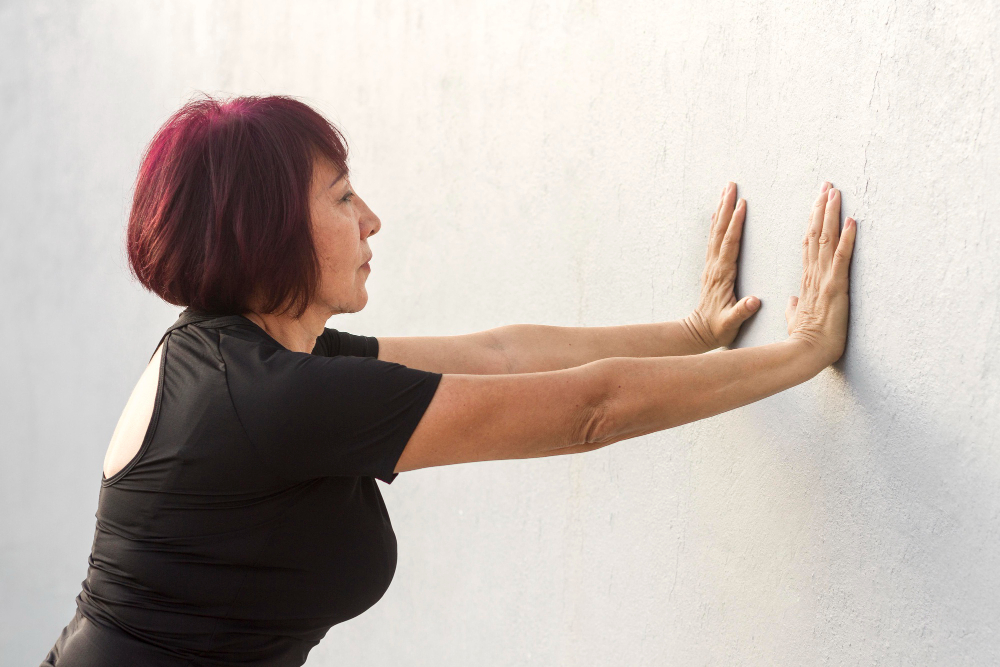Shoulder pain is a common problem which affects around 18-26% of the general population globally. It can arise from an injury, overuse, or even aging. Most importantly, it can stop you from doing simple daily tasks like reaching for a glass, lifting your bag, or even sleeping comfortably.
Fortunately, you can find guaranteed relief in physical therapy exercises for the shoulder. These exercises result in gradual reduction of pain, and increase in strength, flexibility, and mobility of the shoulder. When coupled with guidance and commitment, people are able to resume their normal activities without experiencing discomfort.
This article serves to assist you in understanding how to perform the best physical therapy exercises aimed toward relief from shoulder pain. So, if you are tired of the constant discomfort in your shoulder, read this article to improve your quality of life.
The Shoulder Anatomy and Its Common Issues
The shoulder is the joint with the most range of motion along with the most complex structure in the human body. It consists of 3 bones: the humerus (upper arm bone), scapula (shoulder blade), and clavicle (collarbone). These bones are connected by a multitude of muscles, tendons, and ligaments, all collaborating together, giving the arm the ability to move in different directions. The rotator cuff is made of four muscles, namely supraspinatus, infraspinatus, teres minor, and subscapularis, which are mainly responsible for the movement of the shoulder joint and its stability.
However, this complexity also increases the chance of injury to the shoulder. Some of such injuries are:
Rotator Cuff Injuries: These shoulder injuries often occur when you perform repetitive overhead movements or experience direct trauma. They often involve pain, weakness, and lack of mobility in the shoulder region. Research indicates that 25% of people over 50 years have been known to have rotator cuff tears.
Frozen Shoulder (Adhesive Capsulitis): This condition is characterized by gradual thickening and tightening of the shoulder capsule as well as great stiffness and pain associated with it. Although it is more common in people aged 40 to 60, it also affects 2 to 5% of the general population.
Shoulder Impingement: The shoulder joint is a complex area that can face issues like tendonitis, which is characterized by pain and inflammation due to inflammation of the rotator cuff tendons getting pinched in the bone of the shoulder. This problem is quite common in both athletes and laborers.
If you are experiencing shoulder pain or restricted movement in the joint, it is important for you to understand these conditions. Physical therapy exercises for the shoulder address these issues by building muscle, promoting mobility, and restoring normal biomechanics.
Top 5 Physical Therapy Exercises for Shoulder Pain Relief
The shoulder is a complex joint. When dealing with pain in this area, physical therapy exercises are effective because they work on deep structures of the joint. Here are the five exercises that can significantly assist you during the recovery process.
1. Wall Climb
Target Muscles: Deltoid, rotator cuff, shoulder flexors
This climbing exercise is perfect for improving shoulder flexibility and mobility. It can also help if you’re dealing with pain or an injury that makes movement more difficult.
Instructions:
- Face a wall that is an arm’s distance away from your body. Place your hands on the wall at shoulder level.
- Walk your fingers up the wall as far as you are able to go without any pain.
- Hold for 3-5 seconds before walking your fingers down the wall.
- Repeat this process 5-10 times, 2-3 times a day.

2. External Rotation with Resistance Band
Target Muscles: Rotator cuff (infraspinatus and teres minor)
This physical therapy exercise works the rotator cuff muscles, which are essential for shoulder mobility. These muscles need to be well-conditioned and strong for proper shoulder stabilization.
Instructions:
- Secure a resistance band to a doorknob or any stationary object.
- Stand with the band at 90 degrees elbow flexion, forearm perpendicular to the torso.
- With your elbow tucked close to your body, rotate your arm outwards and backward against the resistance of the band.
- Return to the starting position.
- Do 2-3 sets of 10-15 repetitions per day.
3. Scapular Retraction (Squeeze Shoulder Blades Together)
Target Muscles: Rhomboids, trapezius, and serratus anterior.
This physical therapy exercise strengthens the muscles surrounding the shoulder blades to help improve posture and stabilize the shoulder joint.
Instructions:
- You may either sit or stand as long as you maintain a straight back and relaxed, drooped shoulders.
- Imagine there is a pencil positioned between your shoulder blades, pinch your shoulder blades towards each other as if wanting to grasp the pencil.
- Hold for 5 seconds, and remember to relax afterward.
- Aim for 10-15 repetitions, 2-3 sets per day.

4. Isometric Shoulder Press
Target Muscles: Deltoid, supraspinatus and trapezius.
Great rehabilitation exercise that strengthens the shoulder muscle with minimum movement and is ideal for people who are in the early phase of rehabilitation.
Instructions:
- You may either sit or stand as long as you maintain a straight back.
- Lift your arm to shoulder level and place your palm against a wall or sturdy object.
- Do not move your arm as you push against the wall for 5-10 seconds, then relax.
- Try this for 10-15 times in 2-3 sets.
What Should You Expect After Physical Therapy Exercises for the Shoulder?
Much like anything else in life, the progress you make following physical therapy exercises for shoulders is determined by the severity of your condition, how strictly you adhere to the exercise schedule, your body’s reaction to the treatment, and so on. It is not uncommon for most individuals to start feeling gradual shifts concerning their pain, strength, and mobility. Here are a few things to keep in mind:
First Few Days (0-1 Week)
Your primary goal in this time frame is to begin implementing measures that help mobilize the shoulder joint while also paying attention to how much further strain it causes.
1 – 2 Weeks
During this period, while you exercise, you are going to start noticing a decrease in both pain and stiffness. Most people with frozen shoulder pain, rotator cuff injuries, and limited mobility usually start to notice improvements in flexibility at this time.
2 – 4 Weeks
In the second and third weeks, variation in strength is one of the more noticeable changes. This is the stage where external rotation with resistance band and scapular retraction exercises begin to play an active role in muscle building around the shoulder blade and rotator cuff areas.
4-6 Weeks and Beyond
By the end of the 4-6 week period, the shoulder muscles may feel much stronger, and you may be able to return to more vigorous activities, depending on how well you are progressing. It will still take time to fully restore mobility and strength, but by this time, most people experience functional improvement. Your shoulder joint becomes more stable, allowing you to perform overhead motions and lifting tasks with greater ease.
When to Seek Professional Help?
Shoulder strengthening exercises can be very useful, but knowing when to get more professional help is also very important. In some cases, no matter how much you try, shoulder pain persists, which should not be ignored.
If you find yourself in any of these scenarios, then it may be time to seek help from a physical therapist or healthcare provider:
- Pain that is constant or increasingly getting worse.
- Inability to perform daily activities.
- Having some form of instability or weakness.
- Lack of progress
At Physio Logic NYC, our team of skilled physical therapists can guide you through more advanced rehabilitation techniques, offer manual therapy, or suggest other treatments such as ice or heat therapy, ultrasound, or even more advanced strengthening exercises. Don’t hesitate to reach out if you feel stuck or if your recovery isn’t progressing as expected.
The Bottom Line
Shoulder pain can be a frustrating experience, but with the right physical therapy exercises for the shoulder, you can witness incredible results within a short period. These exercises focus on the muscles responsible for the shoulder joint and help reduce the pain, improve mobility, and restore strength. Consistency is key, so don’t forget to listen to your body and give yourself time to heal from any injury.
While some may appreciate improvement after two or three weeks, full recovery can take longer. With proper dedication, you will soon be able to enjoy a pain-free shoulder and return comfortably to your daily routines.
When progress stalls, seeking help from a professional can significantly help. Physio Logic is your best bet for expert physical therapy. They offer personalized care, and a practitioner will skilfully assist you in navigating the recovery process while crafting a treatment plan that meets your specific needs.